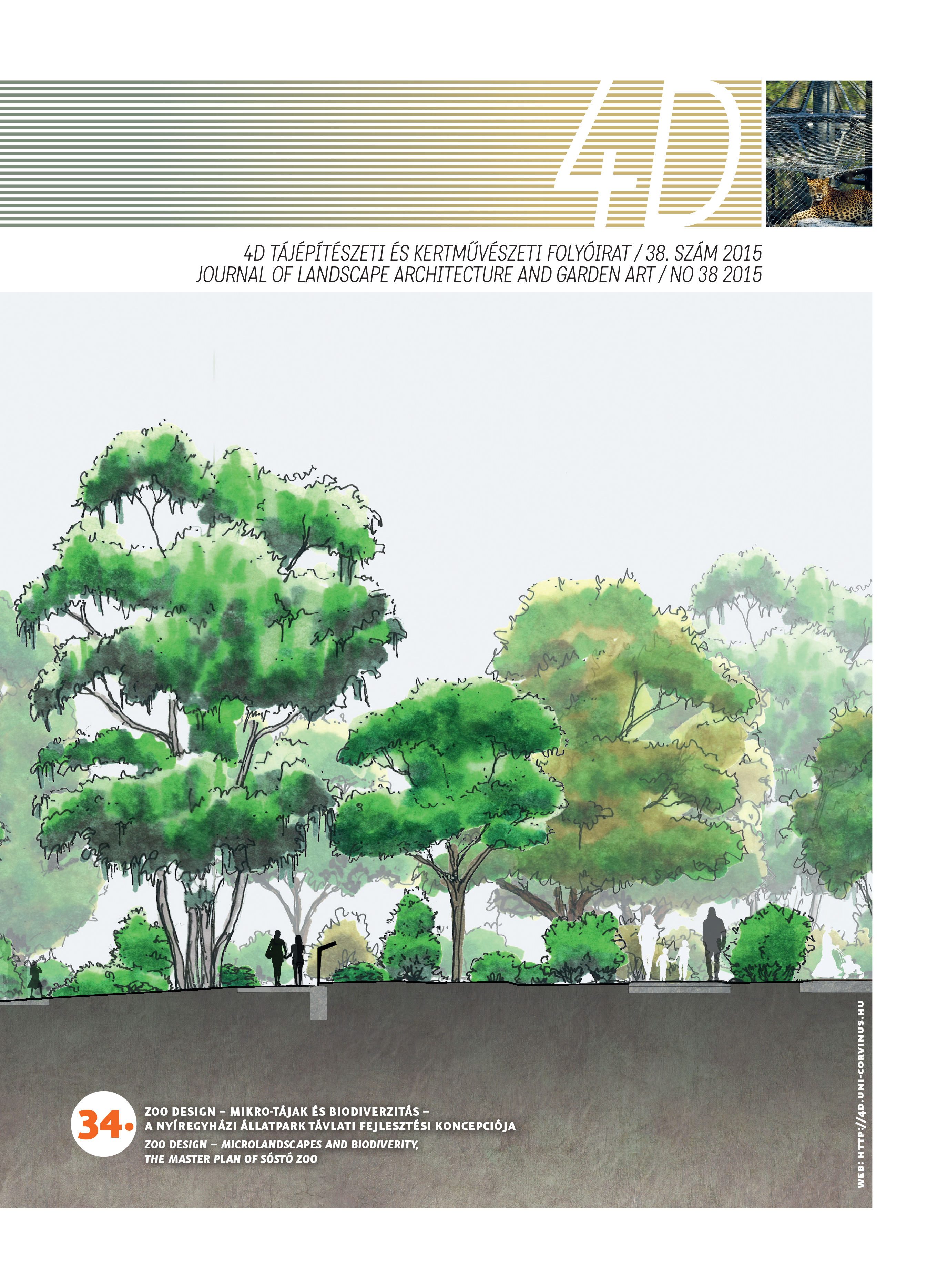How does urban greenery influence our physical, social and psychological well-being?
the effects of city squares with or without trees on well-being of users
Kulcsszavak:
városi zöldfelületet, jólét, városi terek, fákAbsztrakt
Statements such as „being in nature” and „being in the landscape” release positive emotions in our brain. This effect and the reactions initiated by the experience of being in nature have been scientifically proven in the psychological, physical and social fields.1 Given that modern life is predominantly urban, the creation of urban open spaces is of particular importance, allowing the positive effects described above to impact on the lives and activities of city dwellers. Having access to a variety of urban open spaces supports our wellbeing in many ways. The empirical study explained in this article explores issues around the perception of and the effects of different public open spaces
Hivatkozások
cf.: D. Scholz: Landschaft als ästhetisches Ereignis, Ein Beitrag zur Psychologie landschaftsästhetischer Wirkung, Beiträge zur räumlichen Planung, Heft 53, Hannover, 1998; Kap lan & Kaplan: The Experience of Nature, A Psycholgical Perspective, Ulrich, 1995; Raimund Rodewald: Paysage à votre santé – ein Projekt zur Gesundheits- und Landschaftsförderung, In: Naturschutz und Gesundheit, Heft 65, Bonn-Bad Godesberg, 2008; Appleton, J.: The Experience of Landscape, New York, 1975, Wiley; Bauer, N., Martens, D.: Die Bedeutung der Landschaft für die menschliche Gesundheit- Ergebnisse neuster Untersuchungen der WSL, Forum für Wissen, 2010, p. 43 – 51
Schwarze, M., Rüdisüli, H-P.: Grünraum in der Stadt – Erhalten, Gestalten und Nutzen, Bericht 29 des NFP ‚Stadt und Verkehr‘, Zürich, 1992, p.7
th European Public Health Conference: Health in Europe: are we there yet? Learning from the past, building the future, Session Health determinants and the Environment, 11.2013, Brussels
Gyimóthy, A.: Psychological Health of Urban Inhabitants, European Journal of Public Health, Vol. 23, Supplement 1, 2013
Rodewald, R.: Paysage à votre santé – ein Projekt zur Gesundheits- und Landschaftsförderung In: Erdmann, K-H. et al.:Naturschutz und Gesundheit: Eine Partnerschaft für mehr Lebensqualität, Heft 65, Naturschutz und biologische Vielfalt, BfN, Bonn, 2008
Szilágyi, K., Zelenák, F., Kanczlerné Veréb, M., Gerzson, L., Balogh, P.I., Czeglédi, Cs.: Limits of ecological load in public parks – on the example of Városliget, in Applied Ecology and Environmental Research, 2014
cf. Gyimóthy, A.: Auswirkungen derwahrgenommenen städtischen Natur auf den psychosozialen Empfindungsbereich, Hat Natur Platz in der Stadt?, Verlag Dr. Kovac, Hamburg, 2010, p.75
Resolution ‚Lebenswerte Stadt von Morgen‘, Partnerregionen-Konferenz, Bad Langensalza, 05.2009
Kaplan, R., Kaplan, S.: The Experience of Nature, A Psychological Perspective, Ulrich’s Bookstore, 1995
Kaplan, R., Kaplan, S.: The Experience of Nature, A Psychological Perspective, Ulrich’s Bookstore, 1995
The investigation was carried out in 2010 in the form of an on-line questioning with combined method in four languages. S. Gyimóthy, A.: Auswirkungen der Wahrgenommenen städtischen Natur auf den psychosozialen Empfindungsbereich, Kovac, 2010, Hamburg
Siebel, W.: Die europäische Stadt, Suhrkamp, Frankfurt, 2004, p. 12 „What is a city, arises from the difference to the non-city, to the country; what is the European from the difference to the cities of other societies.“ Siebel lists five characteristics which describe the ideal type of the European city. The characteristics about the urbane life style and about the contrast of city and country are to be considered by this implementation by these characteristics.
Steyer, R., Schwenkmetzger, P., Notz, P., Eid, M.: Der Mehrdimensionale Befindlichkeitsfragebogen (MDBF). Handanweisung; Göttingen, Hogrefe, 1997
Letöltések
Megjelent
Folyóirat szám
Rovat
License
Copyright (c) 2024 Gyimóthy Adél

This work is licensed under a Creative Commons Attribution-NonCommercial-NoDerivatives 4.0 International License.
A folyóirat Open Access (Gold). Cikkeire a Creative Commons 4.0 standard licenc alábbi típusa vonatkozik: CC-BY-NC-ND-4.0. Ennek értelmében a mű szabadon másolható, terjeszthető, bemutatható és előadható, azonban nem használható fel kereskedelmi célokra (NC), továbbá nem módosítható és nem készíthető belőle átdolgozás, származékos mű (ND). A licenc alapján a szerző vagy a jogosult által meghatározott módon fel kell tüntetni a szerző nevét és a szerzői mű címét (BY).



